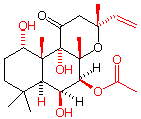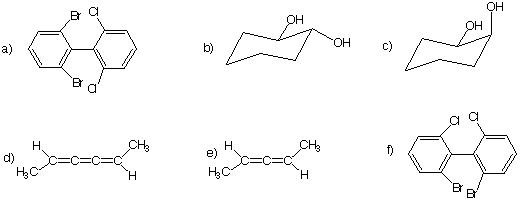Versions of this symbol date to the time of the Vikings. In the 15th century, it was apparently the symbol of a tripartite alliance of the Milanese families Visconti, Sforza and Borromeo via intermarriage. Break any (wedding?) ring and the others separate, hence the alliance is broken. The rings form a chiral object (left) that are not superimposable on their mirror image. A set of Borremean rings has been used as the logo for a certain refreshment that extols purity, body, and flavor. Is the sense of chirality of the two sets of Borremean rings the same or different? For some other examples, click here.
1) Read the stereoisomers module in the StudyAids and do the exercises. There is no need to record answers on your homework. Don't forget the Chirality of Shells (Powerpoint).



